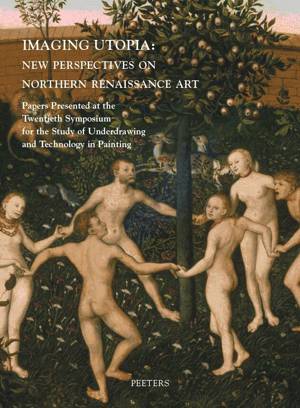
- Afhalen na 1 uur in een winkel met voorraad
- Gratis thuislevering in België vanaf € 30
- Ruim aanbod met 7 miljoen producten
- Afhalen na 1 uur in een winkel met voorraad
- Gratis thuislevering in België vanaf € 30
- Ruim aanbod met 7 miljoen producten
Zoeken
Imaging Utopia
New Perspectives on Northern Renaissance Art: Papers Presented at the Twentieth Symposium for the Study of Underdrawing and Technology in Painting Held in Mechelen and Leuven, 11-13 January 2017
€ 254,45
+ 508 punten
Omschrijving
On the first page of his famous book, Thomas More describes Utopia as a Libellus vere aureas, a little true golden book. This little book, published in Leuven in 1516, proved to become one of the greatest works of socio-political analysis of all time; the new spirit attached to More's work continues to inspire, and was equally the inspiration for the collection of essays presented in this book. The present volume contains the proceedings of the conference Imaging Utopia: New Perspectives on Northern Renaissance Art. In this book, several leading experts in the field of art history reflect on the theme Imaging Utopia in diverse and inventive ways. The result of these scholarly reflections is as varied as the theme itself and examines such topics as the work by Quinten Massys in the context of his relation with Erasmus and More, the Utopian construction of the Prince Bishop's Palace of Liege, and City Portraits in religious iconography. A number of entries discuss the art technical research on the important sixteenth-century Enclosed Gardens of Mechelen.
Specificaties
Betrokkenen
- Uitgeverij:
Inhoud
- Aantal bladzijden:
- 208
- Taal:
- Engels
- Reeks:
- Reeksnummer:
- nr. 20
Eigenschappen
- Productcode (EAN):
- 9789042941526
- Verschijningsdatum:
- 25/03/2021
- Uitvoering:
- Paperback
- Formaat:
- Trade paperback (VS)
- Gewicht:
- 1859 g

Alleen bij Standaard Boekhandel
+ 508 punten op je klantenkaart van Standaard Boekhandel
Beoordelingen
We publiceren alleen reviews die voldoen aan de voorwaarden voor reviews. Bekijk onze voorwaarden voor reviews.







